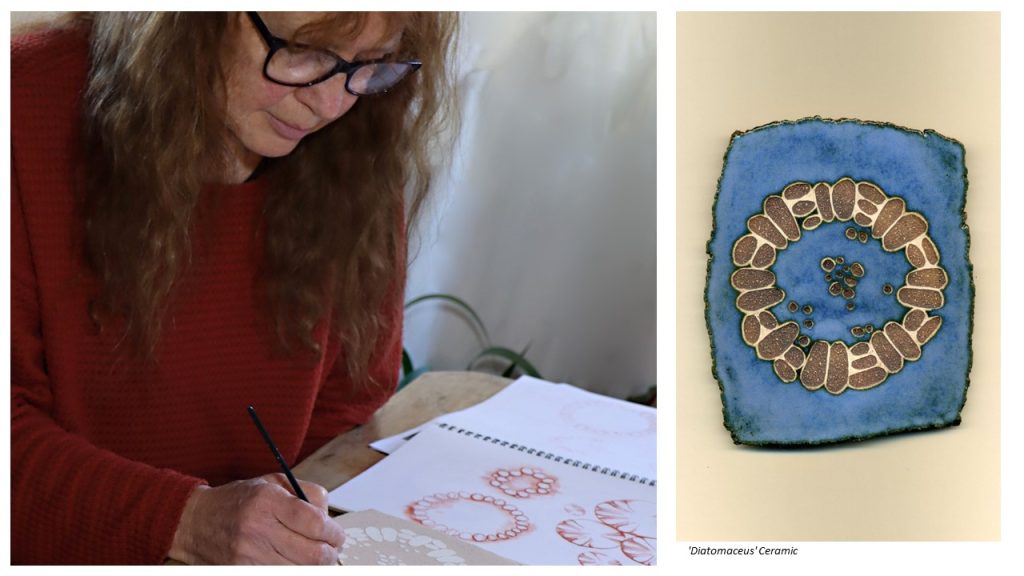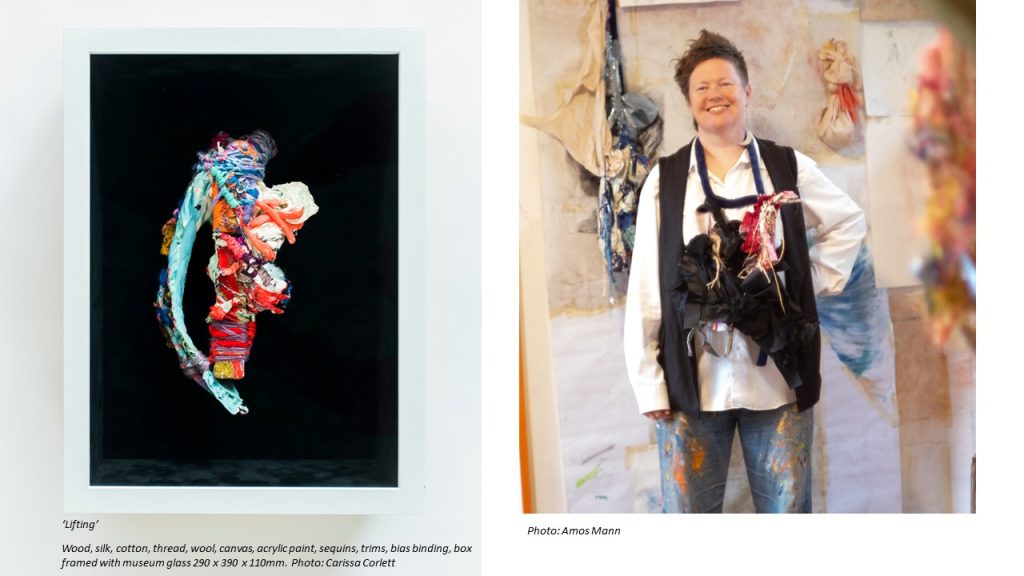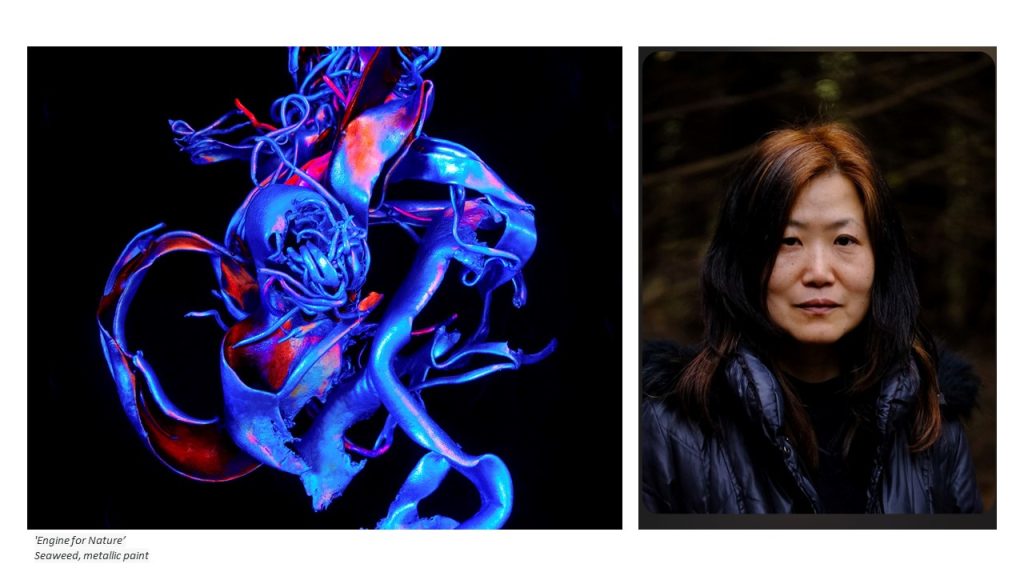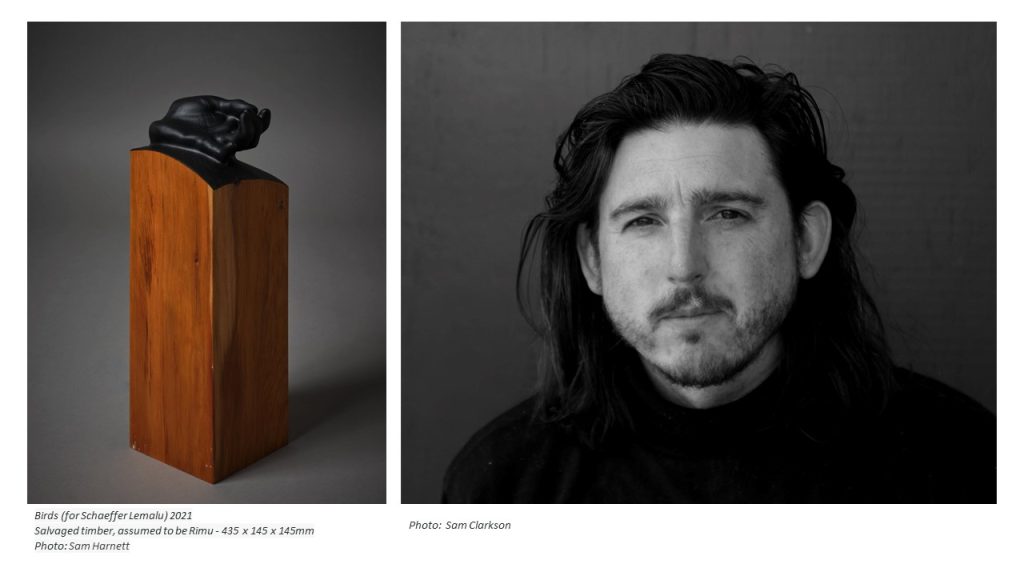In June 2024, we announced the placements for four artist residencies over the coming year.
The first residency commencing in August 2024 – Karen Aitken and Sian Quennell Torrington.
The second residency commencing in February 2025 – Motoko Kikkawa and John Ward Knox.
Karen Aitken

For many years I have been involved in the Ōamaru art community, exhibiting work, teaching art to school students, and helping organise art events and workshops. I have always been drawn to art and love the process, the challenge, and the problem solving. The creative practice for me is a way of continuously exploring and learning. Through tertiary education, I was able to further develop my skills and passion for art. Drawing is an essential part of my artistic practice. I love the tradition of life drawing. I facilitate a life drawing group, and I am a part of a portraiture group.
As a member of the Crafted Gallery, I work with colour, pattern, and glaze reactions on various clay types to create ceramic wall hanging pieces. I particularly appreciate the malleable nature of clay, as well as the chemistry and mystery of the glazing process that produces unexpected and beautiful results. Previously, I studied and worked as a scientist and enjoy linking art and science. Palaeontology especially fascinates me. My current series of ceramic pieces are inspired by the exquisite fossilised Ōamaru diatoms.
The Crucible Artist Residency is a wonderful opportunity for me to delve deeper into my art practice, incorporate and promote both new and age-old technologies, and share my passion for art, science, and history with the wider community.
Sian Quennell Torrington

“The fire cracked and roared and the mould at its centre glowed white hot… With care, she edged them forward, past the mould to a crucible of molten metal.” — Boudica, Manda Scott. Time frame: AD 32 – AD 43
I am interested in transformation, and how we change. As humans we seem to resist change, and yet it is a natural and inevitable process of growth. I am so excited to work with and alongside the skilled foundry workers at the Crucible residency, working with dramatic and beautiful processes of transformation in ancient forms through metal.
My art practice relates to the body, and explores our physical responses to emotional experiences through drawing and sculpture. I dance and draw, using colour and an array of different materials to express softness, spikiness, tightness, openness – all of the things we can feel, and how they make our bodies move or constrict, how we relate to each other.
I’m interested in the ways we ‘armour’ ourselves when we try to protect our heart, as well as what happens when we allow the complexity, messiness and beauty to be seen. In my recent project ‘How is Your Heart?’, I offered audiences expressive wearable sculptures and drawings to stand in for words, expressing complexity, beauty, hope and fear. Many people tried on and engaged with these works, sharing visually the beauty, tangles, and vulnerability that they related to. During the residency I will be developing these ideas, using wood and metal, weaving in what I will learn from the dramatic processes of transformation at the foundry.
I am fascinated by the ancient art of metal casting. My ancestors on my father’s side come from Wales, and I recently read the Boudica series, about ancient cultural ancestors who specialised in metal casting. I grew up in the UK, visiting burial mounds where swords, parts of armour, and precious objects were discovered many years later in burial mounds. These held a deep interest for me. They represent how we defend and protect ourselves.
My art projects often include audience participation, working with communities, artists and wider audiences. I am very much looking forward to collaborating with skilled foundry technicians, working alongside Karen Aitken, and engaging with the exciting local Ōamaru arts community.
Motoko Kikkawa

Motoko Kikkawa was born in Tokyo, Japan, in 1968 and after obtaining a degree in Philosophy at Nihon University, moved to Dunedin over twenty years ago. Graduating from the Dunedin School of Art in 2010, she has been a vibrant part of the local and national art scene from the outset, as her myriad solo or collective shows, residencies, and performances up and down the country attest, in both public and private spaces.
A prolific visual artist primarily creating highly detailed works on paper, Kikkawa is also unafraid to test boundaries, genres, and new materials (including video, kirigami from old wallpaper, kelp, clay, and mushroom spore tests). She is a talented violinist who regularly plays with various formations and her music-making reflects her approach to art: she listens intently, picks up moods and keys, finding harmonies and atonal notes that suggest new pathways to explore.
John Ward Knox

John Ward Knox is an artist living and working from Karitane, Ōtepoti Dunedin.
Working within a broad range of mediums and techniques, Ward Knox’s work expresses material lightness and conceptual depth.
Ward Knox is represented in numerous public collections including Chartwell Collection, Auckland Art Gallery Toi o Tāmaki; Govett-Brewster Art Gallery, New Plymouth, and Hocken Collections Uare Taoka o Hākena, University of Otago.